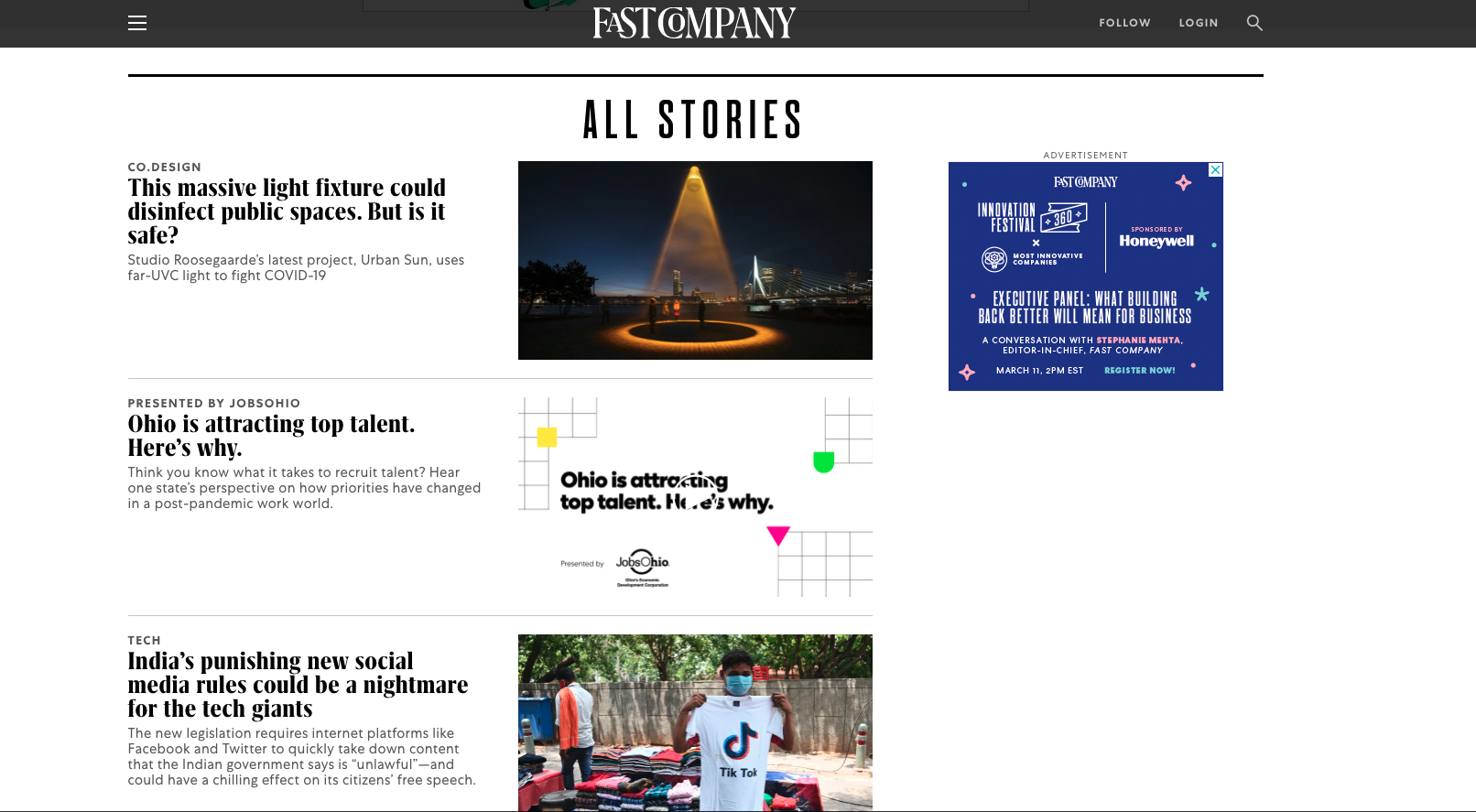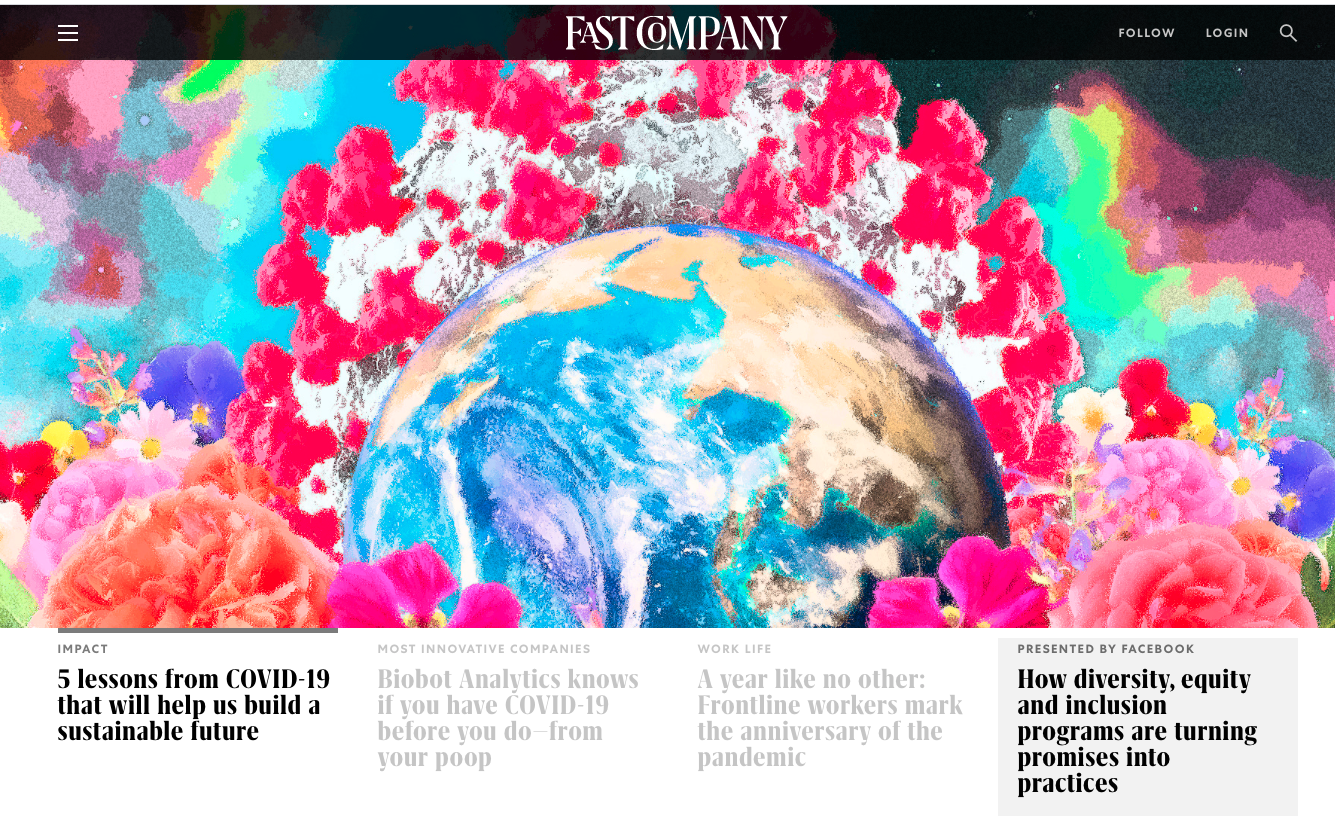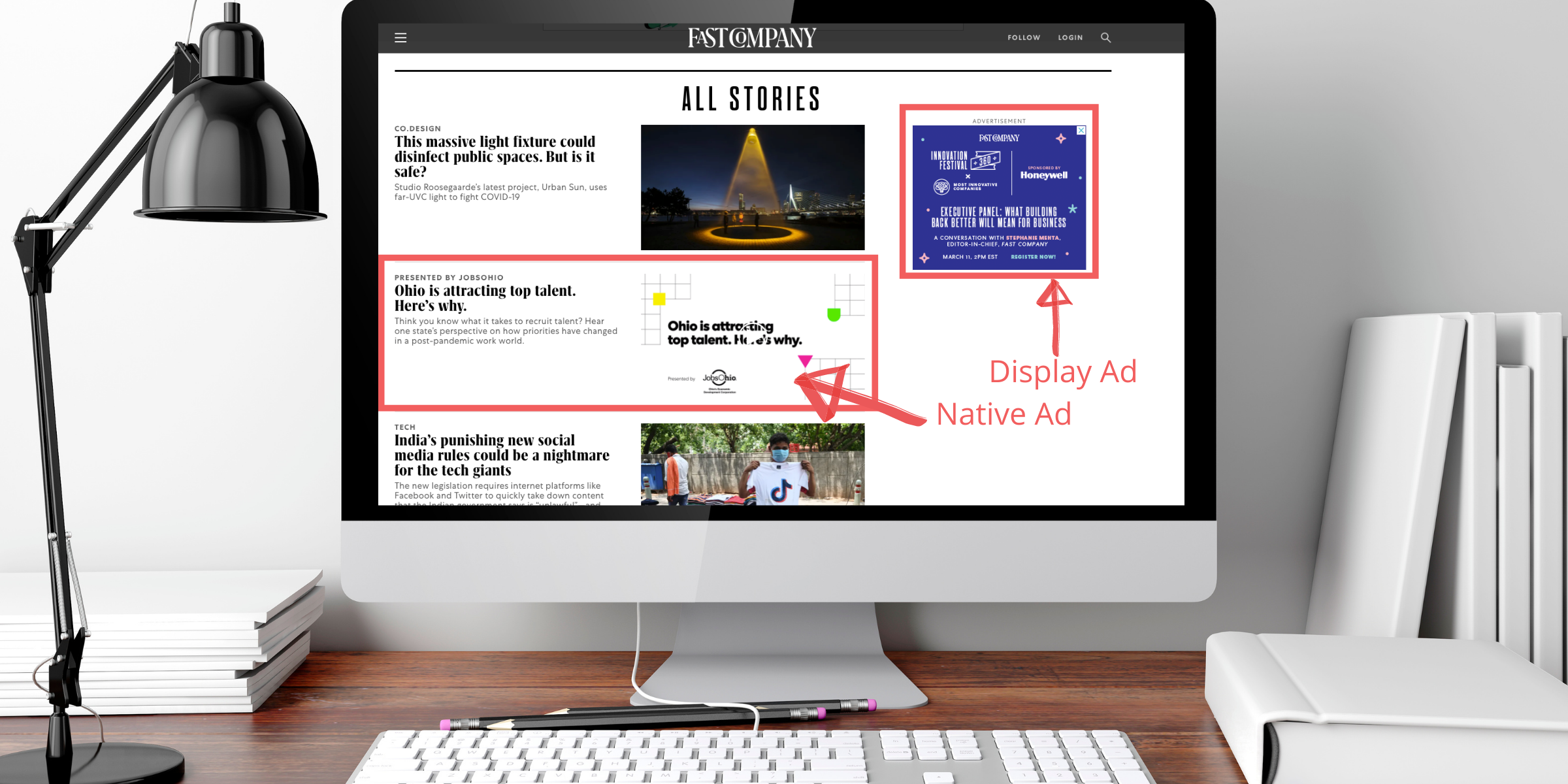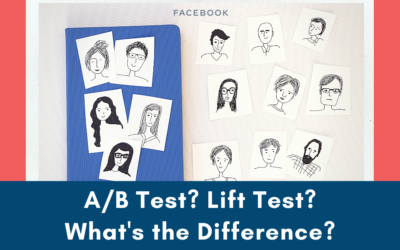By now, everyone is aware of what a display ad is. Chances are, you see them all the time and you may or may not click.
Problem is, ad blockers are becoming more and more common. So, how do you keep your product or service out there and relevant reaching those in the consideration phase without getting blocked?
Enter native advertising.
For the most part, you may not even have been aware that a piece of sponsored content is an ad. This, my friends, is the magic and the result of a well-planned native ad strategy. Native ads are successful when they mimic the look and feel of the same content on a page that you are visiting such as a news outlet.
Take this image for example. The display ad on the right for Fast Company is clearly a display ad. But, from glancing at the article on the left, you may not have noticed that the article with the headline, “Ohio is attracting top talent. Here’s why,” is actually an ad. The ad is “native” to the page and blends right in!

“51% of people <30 dont’ care who creates the content they consume, as long as it’s entertaining or informative.”
~ Paul Hiebert, Research Writer at YouGov
Let’s get right down to it. Here are five quick facts about native ads:
,1. There are three types of native ads:
- Search engine native ads

- In-feed ads on social media
- Truth be told, it was actually sort of hard to find a real, true “native” ad on Facebook. A lot of the ads, although in your feed, are blatant ads. The best native ads don’t say, “Hey, look at me, I’m ad ad for this brand that is sponsoring this.”
- Instead, good native ads on Facebook present people with relevant, interesting, and educational information that is most likely of interest to the person viewing it.

- Content recommendations on sites you already visit and consume content like news sites
- See here how the Facebook ad blends into the other headline recommendations on the homepage? Yep. that’s pretty “native.”

2. Native ads have rules
- The FTC regulates native ads. Yes, there is still some clickbait out there, but all that does is completely turn the consumer off when they find out they have been duped. The FTC frowns on this.
- Native ads must be clearly labeled as an ad. This usually means you’ll see a “sponsored” or “promoted by” tag somewhere near the advertiser’s name, which also must be included.
- Native ads must be truthful. Headlines cannot be fake or misleading. If the headline is about tips and tricks for cleaning your desk better, then the article you’re led to after clicking should be about exactly that.
- Native ads can feature opinions, but the content must be clearly labeled as such. For example, an opinion article must state that the article is based on company ABC’s opinion.
3. Native ads work better when someone is in the consideration phase
- Nearly half (50%) of all consumers have no idea what native ads are (source:
- “Consumers look at native ads 53% more than display ads.”
- “Native ads create an 18% increase in purchase intent.”
- “In a recent study at Stanford University, researchers found that native advertising fools nobody. Consumers are well aware that they are viewing a form of advertising, however native ads still have a significant effect on purchase behavior.”
(Sources: Outbrain.com and Wordstream.com)
4. Native is about educating and inspiring readers to take action
If you want to get your brand out there in a non-invasive way, a great way is to find a reputable blog article (or get a reputable blog or partner to write an article) that will resonate with a subset of your audience and run it as a native ad.
This creates the “reputation effect.” Someone wrote about Cool Company A, so Cool Company A must be awesome, and I should visit.
5. Testing is key
There’s no “secret” to native per se, but testing would be the “secret” to successful campaigns if I had to use that term. Testing various headlines with various compelling, high-quality photos is really the only way to find patterns and see what resonates with your goals.
When you find a verb pattern in a headline that seems to work, use that to build on your next campaign. When there’s a style of image that seems to work (and is relevant to the content, of course), try a few more ads in that image style.
The biggest factor that helps the “secret” come to light is knowing your audience. When you know your audience, you can target them the best with relevant content they actually want to see and read.




0 Comments